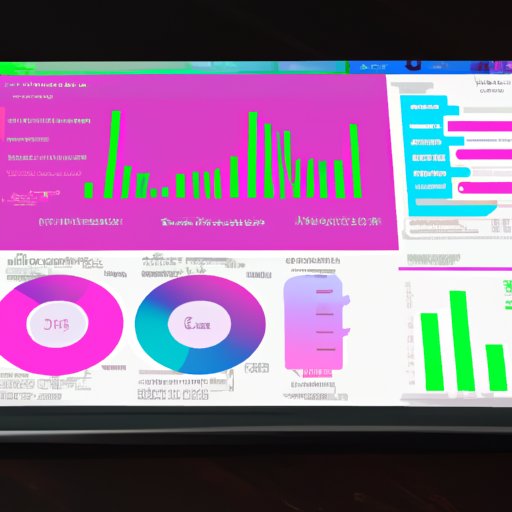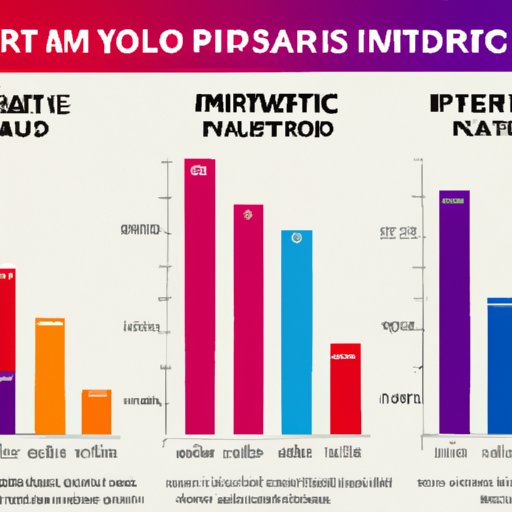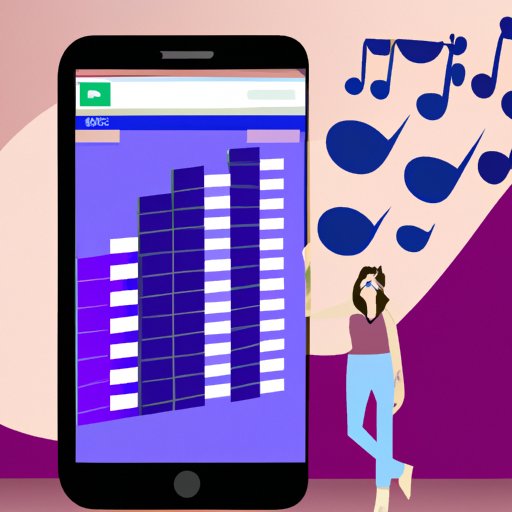Introduction
Streaming music services have become an increasingly popular way to access music in recent years. From Apple Music to Spotify, Amazon Music, and YouTube Music, there is a wide range of streaming platforms available, each offering its own unique features and benefits. But one of the key questions many people have when considering which streaming platform to use is: how much data does streaming music use?

Analyzing the Different Data Usage of Streaming Music Services
In order to answer this question, it’s important to consider a few factors that can affect the amount of data used by streaming music services. These include the type of music streaming service being used, the audio quality settings selected for streaming, and the mobile data allowance available. By understanding the impact these factors have on data usage, it is possible to get a better idea of how much data streaming music services consume.
To estimate the average data usage of popular streaming platforms, it is helpful to look at the reported data usage of other users. According to a study conducted by the University of Ottawa, streaming music services can consume anywhere from 0.5 megabytes (MB) per minute to as much as 5 MB per minute depending on the audio quality settings selected. For example, streaming music at low quality can consume 0.5 to 1 MB per minute, while streaming music at high quality can consume up to 5 MB per minute. This means that listening to an hour of music can consume anywhere from 30 MB to 300 MB of data, depending on the audio quality settings selected.
Breaking Down the Amount of Data Used by Popular Music Streaming Platforms
Now that we’ve established the average data usage of streaming music services, let’s take a closer look at the specific data usage of some of the most popular streaming platforms.
Apple Music
Apple Music is one of the most popular streaming services, and it offers several audio quality settings. If you’re streaming music using the “High Quality” setting, Apple Music will consume 2.4 MB of data per minute, or 144 MB per hour. The “Low Quality” setting consumes 0.7 MB per minute, or 42 MB per hour.
Spotify
Spotify is another popular streaming service and it also offers several audio quality settings. Listening to music at the “High Quality” setting will consume 2.4 MB per minute, or 144 MB per hour. The “Low Quality” setting consumes 0.6 MB per minute, or 36 MB per hour.
YouTube Music
YouTube Music is a streaming service recently launched by Google. It offers three audio quality settings: “High Quality”, “Medium Quality”, and “Low Quality”. Listening to music at the “High Quality” setting will consume 4 MB per minute, or 240 MB per hour. The “Medium Quality” setting consumes 1.5 MB per minute, or 90 MB per hour. And the “Low Quality” setting consumes 0.3 MB per minute, or 18 MB per hour.
Amazon Music
Amazon Music is another popular streaming service, and it offers two audio quality settings. Listening to music at the “High Quality” setting will consume 2.4 MB per minute, or 144 MB per hour. The “Low Quality” setting consumes 0.7 MB per minute, or 42 MB per hour.
How Much Data Does Listening to Music on Streaming Services Consume?
As we’ve seen, the amount of data consumed by streaming music services can vary greatly depending on the audio quality settings selected. To get a better sense of how much data is being consumed, it’s helpful to look at the estimated data usage for different audio quality settings.
For example, streaming music at the “High Quality” setting can consume up to 5 MB of data per minute, or 300 MB per hour. On the other hand, streaming music at the “Low Quality” setting can consume as little as 0.5 MB per minute, or 30 MB per hour. This means that if you are streaming music for an hour each day, the total data usage could range from 30 MB to 300 MB per day, depending on the audio quality settings selected.
It’s also important to note that streaming music services can consume more data if you are streaming music over a cellular network, as opposed to a Wi-Fi connection. So if you are streaming music on the go, it’s best to connect to a secure Wi-Fi network whenever possible.

Tips for Reducing Data Consumption
If you want to reduce your data consumption while streaming music, there are a few simple steps you can take. First, make sure to select the audio quality setting that is right for you. If you only need basic sound quality, then the “Low Quality” setting should be sufficient. If you prefer high-quality audio, then the “High Quality” setting is the way to go.
Another tip is to download songs and albums ahead of time so that you can listen offline. This will allow you to enjoy your favorite music without having to worry about data consumption. Finally, try to use Wi-Fi whenever possible, as streaming music over a cellular network can significantly increase your data usage.

Comparing the Data Usage of Different Streaming Music Platforms
When comparing the data usage of different streaming music platforms, it’s important to consider both the audio quality settings and the amount of mobile data allowance used. For example, Apple Music and Spotify both offer “High Quality” audio settings that consume 2.4 MB per minute, or 144 MB per hour. However, Apple Music also offers a “Low Quality” setting that consumes 0.7 MB per minute, or 42 MB per hour. This means that if you are streaming music for an hour each day, Apple Music would consume less data than Spotify.
It’s also important to consider the amount of mobile data allowance used. For example, YouTube Music offers higher audio quality settings that consume more data than other streaming platforms. However, it also offers lower audio quality settings that consume less data than other streaming platforms. This means that if you are streaming music for an hour each day, YouTube Music may still be the most cost-effective option.
Exploring the Impact of Streaming Music on Mobile Data Allowances
Streaming music can have a significant impact on your monthly data allowance, especially if you stream music frequently or at high audio quality settings. To get a better sense of the impact streaming music can have on your data allowance, it’s helpful to do a quick calculation. For example, if you are streaming music for an hour each day at a “High Quality” setting, then you will be consuming approximately 144 MB of data per hour. Over the course of a month, that adds up to approximately 4,320 MB of data, or 4.32 GB.
While this may seem like a lot of data, it’s important to remember that many mobile plans now offer generous data allowances. For example, many plans offer 10 GB or more of data per month, so streaming music for an hour each day would still leave plenty of data for other activities.
Strategies for Reducing Data Consumption
If you find that streaming music is consuming too much of your monthly data allowance, there are a few strategies you can use to reduce your data consumption. First, make sure to select the audio quality setting that is right for you. As we’ve seen, streaming music at the “Low Quality” setting can consume less data than streaming at the “High Quality” setting.
Second, try to download songs and albums ahead of time so that you can listen offline. This will allow you to enjoy your favorite music without having to worry about data consumption. Finally, try to use Wi-Fi whenever possible, as streaming music over a cellular network can significantly increase your data usage.
Conclusion
Streaming music services can consume a significant amount of data, depending on the audio quality settings selected. However, by selecting the right audio quality settings and downloading songs and albums ahead of time, it is possible to reduce your data consumption and enjoy your favorite music without breaking the bank.
Summary of Findings
This article explored how much data does streaming music use, analyzing the different data usage of popular streaming platforms and providing tips on reducing data consumption. We found that streaming music can consume anywhere from 0.5 MB to 5 MB of data per minute depending on the audio quality settings selected. We also found that streaming music can have a significant impact on your monthly data allowance, but there are strategies you can use to reduce your data consumption.
Final Thoughts
Streaming music services offer a convenient way to access a wide range of music, but it’s important to understand how much data they consume. By taking the time to analyze the different data usage of popular streaming platforms and implementing strategies to reduce data consumption, you can ensure that you get the most out of your streaming experience without breaking the bank.
(Note: Is this article not meeting your expectations? Do you have knowledge or insights to share? Unlock new opportunities and expand your reach by joining our authors team. Click Registration to join us and share your expertise with our readers.)
